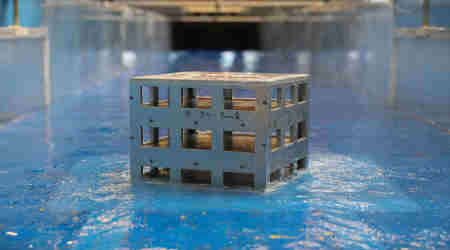
Sacrificial Stories Preserve Building Integrity During Tsunami
March 23, 2018
The impact of a tsunami wave's force on a building is directly proportional to the percentage of windows and doors in the facade, according to research from the École Polytechnique Fédérale de Lausanne (EPFL). In addition, buildings should be of at least three to five stories in order for the roof to serve as a safe area of refuge.
In addition to tsunami, the wave form studied is also created by storm surge, dam failure, impulse waves caused by landslides into bodies of water, and tidal bores.
PhD candidate Davide Wüthrich conducted over 350 experiments with a test canal and a small metal box with variable openings. The goal of his doctoral thesis was to find the facade opening configuration that would allow the building to withstand the impact force of a typical tsunami wave, between 10 and 30 meters high. Wüthrich also tested the structural benefits of letting the water flow over the building.
He found that as building facade openings increased, there was a linear relationship to the decrease in the impact force of the wave on the building. He concluded that sacrificing the lower levels by creating large openings in the lower floors and allowing water to flow through the structure provided the greatest benefit in dampening the wave's impact and reducing upstream water levels, according to the university.
Wüthrich presented his findings at the 37th IAHR World Congress, in Kuala Lumpur, Malaysia, in August 2017, and defended his thesis on March 9, 2018. A Japanese research agency is also working to numerically model his findings, according to EPFL.
This Quick Read was submitted by Naomi Millán, senior editor, Building Operating Management.
Next
Read next on FacilitiesNet












